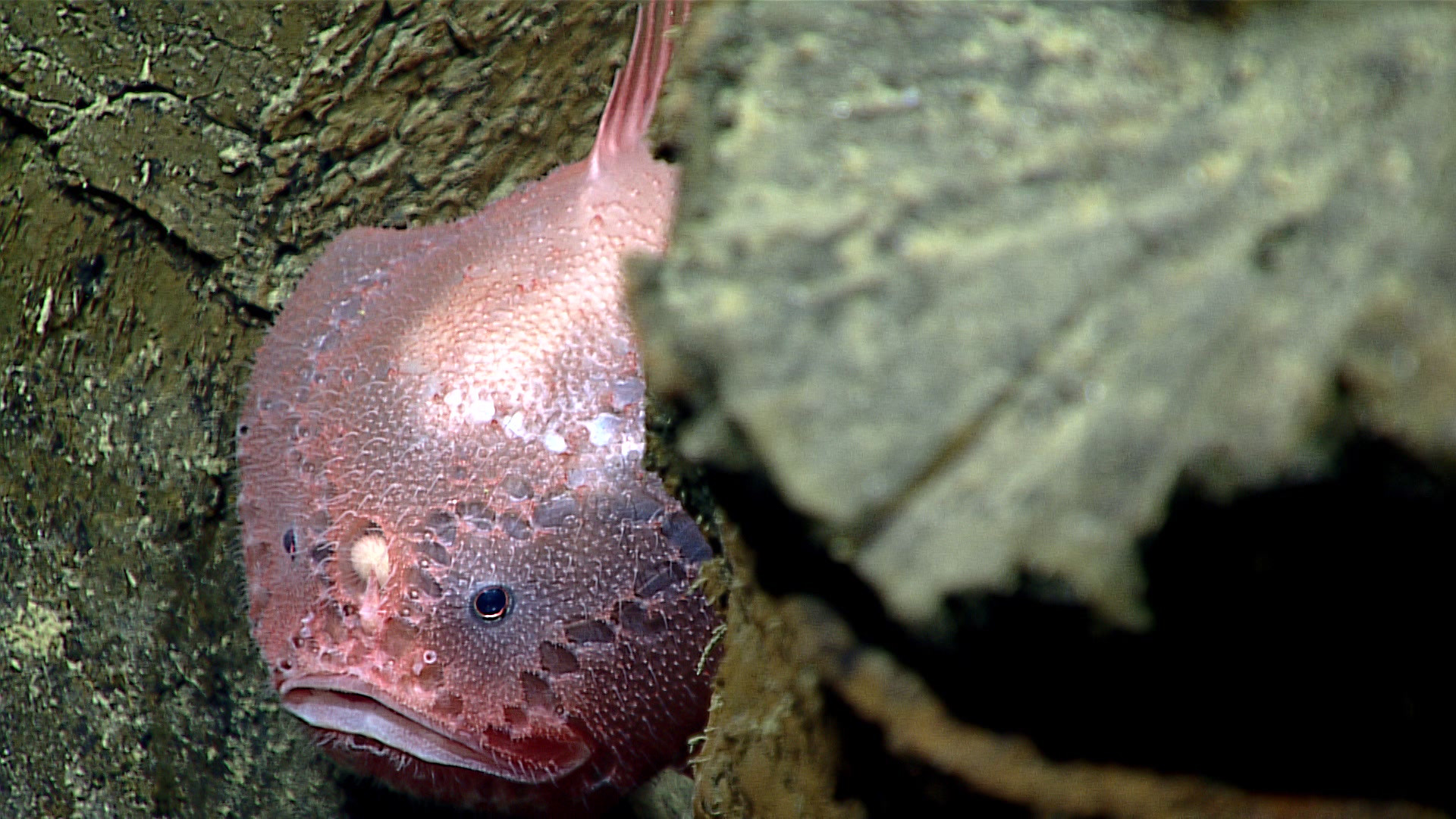
Today is International Women’s Day, a day to celebrate women’s empowerment and gather momentum for even greater achievements in the future. And there’s no better way to celebrate women than by taking a closer look at an animal where the females are in charge: deep-sea anglerfish.
Deep-sea anglerfish are bony fish that live deep in oceans around the world. There are more than 200 species of deep-sea anglerfish, each with a unique look. But beyond their evolutionary ties, deep-sea anglerfish all share one thing in common: they use a lure to attract and catch their prey.
The Lure of the Deep
Food is scarce at the bottom of the ocean, so deep-sea anglerfish have evolved a way to hunt without wasting precious calories. Instead of chasing food in the pitch-black of the sea floor, the anglerfish attract their prey straight to their mouth by dangling a lure, known as an “esca,” in front of their face. When potential food gets close, the anglerfish snaps it up with its large mouth.
Deep-sea anglerfish vary in the exact makeup of their rod and lure. Some rods are short and stout, while others are long and feathery. Escas can be rounded or feathery, but all of them are bioluminescent. This light comes from millions of bioluminescent bacteria in the esca.

Masaki Miya et al., Evolutionary history of anglerfishes (Teleostei: Lophiiformes): a mitogenomic perspective. BMC Evolutionary Biology 2010, 10:58 doi:10.1186/1471-2148-10-58
These bacteria are symbionts—in exchange for producing light from a cue from the anglerfish, they get nutrients and protection from their host. Anglerfish seem to get their bacterial friends from the waters they swim in, picking them up as they move through the ocean.
Sexual Symbiosis
But not all deep-sea anglerfish have glowing lures; only females do. While female anglerfish can get up to almost 4 feet long in some species, males are often only the size of a tadpole. In fact, male anglerfish look so different from females that scientists initially thought they were a separate species.
In some species, males have taken a parasitic role. When they encounter a mature female, males latch onto her with their sharp teeth. Over time, they fuse completely with their mate. Their skin and bloodstream become a part of hers, and their eyes and almost all of their internal organs disappear. The only organs left are their testes: the male has become a literal sperm sack on the female’s body. Talk about clingy! Some females even have multiple males attached to them at once.
Female deep-sea anglerfish have had to adapt their immune system to make this fusing trick happen. Vertebrate immune systems have evolved to destroy any foreign substance. That’s one reason organ transplants in humans must be matched for compatibility; if an organ is too different, the recipient’s body will attack it. In anglerfish species with parasitic males, female anglerfish are missing certain genes related to immune function. More specifically, these species don’t produce T cells or antibodies – they literally can’t mount an immune response against a foreign male body.
Why do males resort to this extreme form of clinging? It’s likely an adaptation to living in the ocean’s dark depths. With so little light to illuminate their surroundings, male anglerfish want to ensure they don’t lose track of females they happen to run into. Fusing is a permanent solution to this problem, but it works! And, of course, females have unlimited access to fresh sperm.
It’s a win-win situation (if you’re an anglerfish).

Resources

Leave a Reply